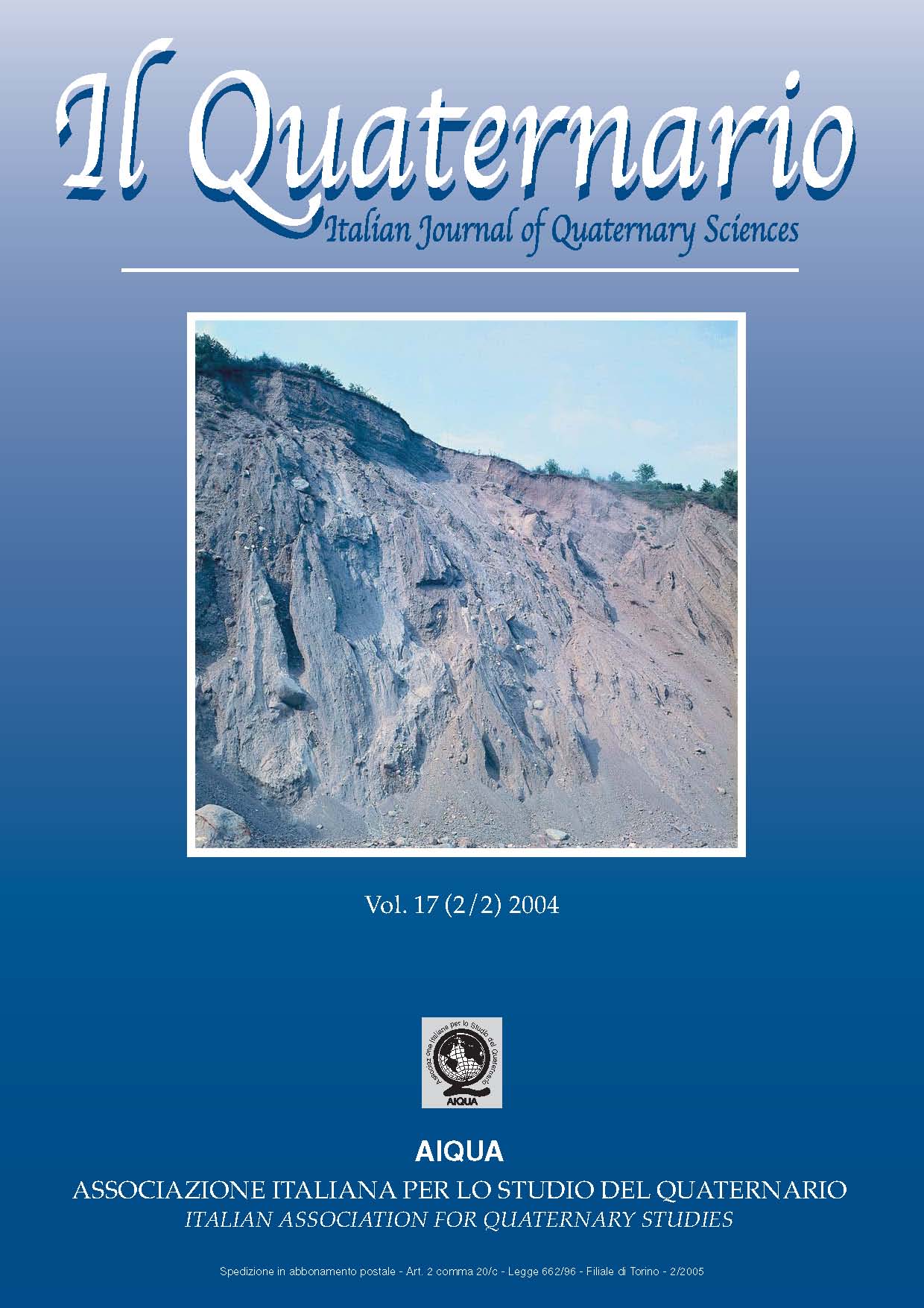GEOMORPHOLOGICAL CHANGES DUE TO HUMAN ACTIONS AT COPPA NEVIGATA (TAVOLIERE DI PUGLIA, SOUTHERN ITALY) RECONSTRUCTED THROUGH CORE ANALYSES
Main Article Content
Abstract
M. Caldara et al., Geomorphological changes due to human actions at Coppa Nevigata (Tavoliere di Puglia, southern Italy)
reconstructed through core analyses. IT ISSN 0394-3356, 2004
The area surrounding the Coppa Nevigata settlement is one of the best places for the reconstruction of the relationship between
human activities and the environment since the first Tavoliere di Puglia population phases. The settlement is the best studied in the
Tavoliere plain, it is situated between the foot of the Gargano headland and the inner shore of the ancient Salpi lagoon, in a very sensitive area from the environmental point of view. Previous studies highlighted the environment evolution and its chronology. The close relationship between the wet area facing the settlement and the population pattern in some cases was documented. The preliminary study of six new cores and considerations made on three previously drilled successions are the base of this research. The studied successions were grouped in three transects and described in function of their distance from the settlement. These are the A (distal), B (in the middle) and the C (proximal) transects. There were recognized eight different phases attributable to two different evolutionary patterns. The environments set under or modified by intentional anthropic action, such as the B (terrestrial phase I), D (terrestrial phase II) and H (historical reclamation) phases, have to be ascribed to the first one. The almost "natural" phases belong to the second one, even if the accumulated material is often related to human actions. These are the phases A (natural phase I), C (natural phase II), E (natural phase III), F (arid terrestrial phase) and G (natural phase IV). The B and D anthropic phases have been recognized beneath the ground surface up to about 90 m far from the nearest exploration ditches dug by archaeologists on the side of the Coppa Nevigata knoll. We were not able to put a boundary between these two phases within the C transect cores, but they are well defined in the A transect. The anthropic phase B corresponds to an urbanization phase that seems to have been started from the most internal settlement areas through the artificial compaction/leveling of marshy/lagoonal deposits, whereas the presence of hearths in distal areas could be attributed to activities carried out outside the defensive wall system. The anthropogenic D phase shows, in the area next to the hillock side, the presence of simple inhabitation structures that lasted for a relatively long time, as testified by numerous tramped and/or leveled surfaces (simple or superimposed) associated to concotto levels and hearths. On the other hand in distal areas the D phase seems to be characterized by an agricultural/pastoral land use. The H phase sediments have locally accumulated under nearly natural conditions, even if they are directly related to reclamation works made during the last two centuries. In conclusion, through time man modified and shaped the environment around the Coppa Nevigata knoll, in particular during the Middle Bronze age (B phase), the Iron age (D phase) and during the last two centuries (H phase). Sometimes the sedimentation processes under natural conditions were also strongly influenced by man, as suggested by the presence of the organic deposits accumulated during the A phase or by the C phase sediments.
Article Details
Section

This work is licensed under a Creative Commons Attribution-NonCommercial-NoDerivatives 4.0 International License.
The Author grants usage rights to others using an open license (Creative Commons or equivalent) allowing for immediate free access to the work and permitting any user to read, download, copy, distribute, print, search, or link to the full texts of articles, crawl them for indexing, pass them as data to software, or use them for any other lawful purpose.

